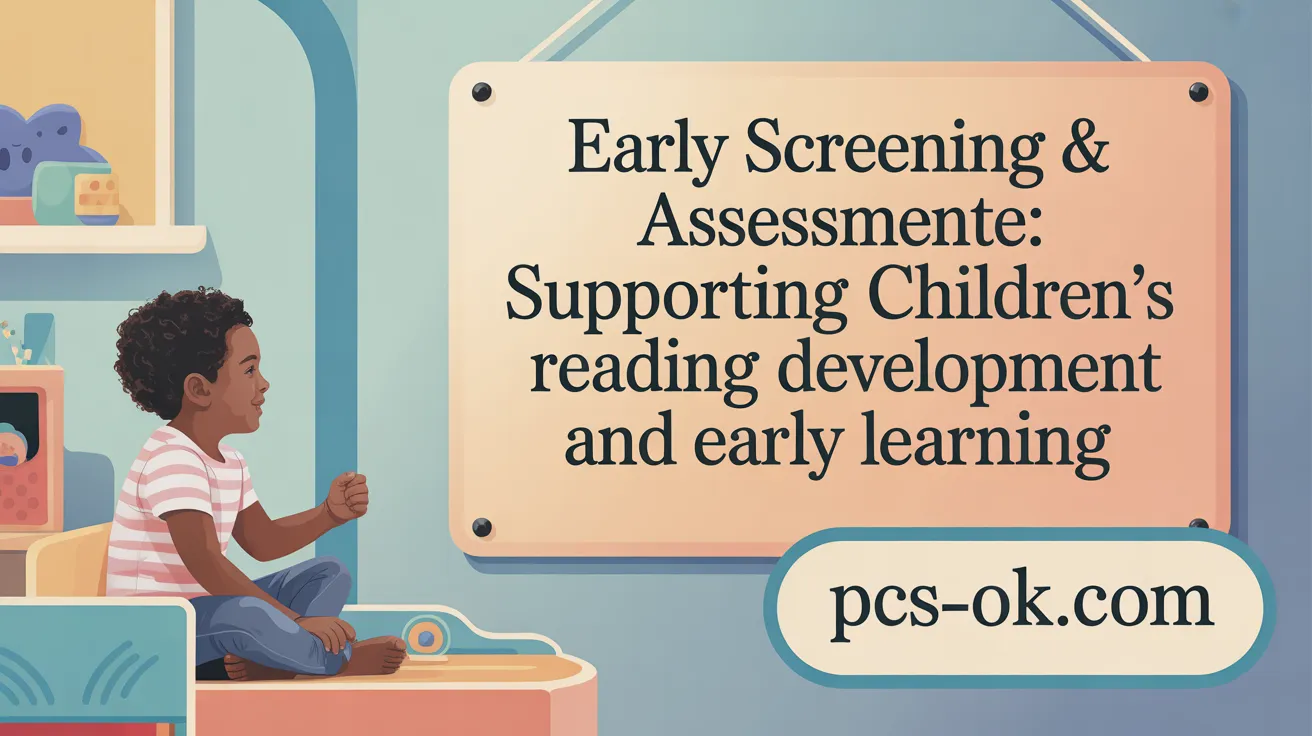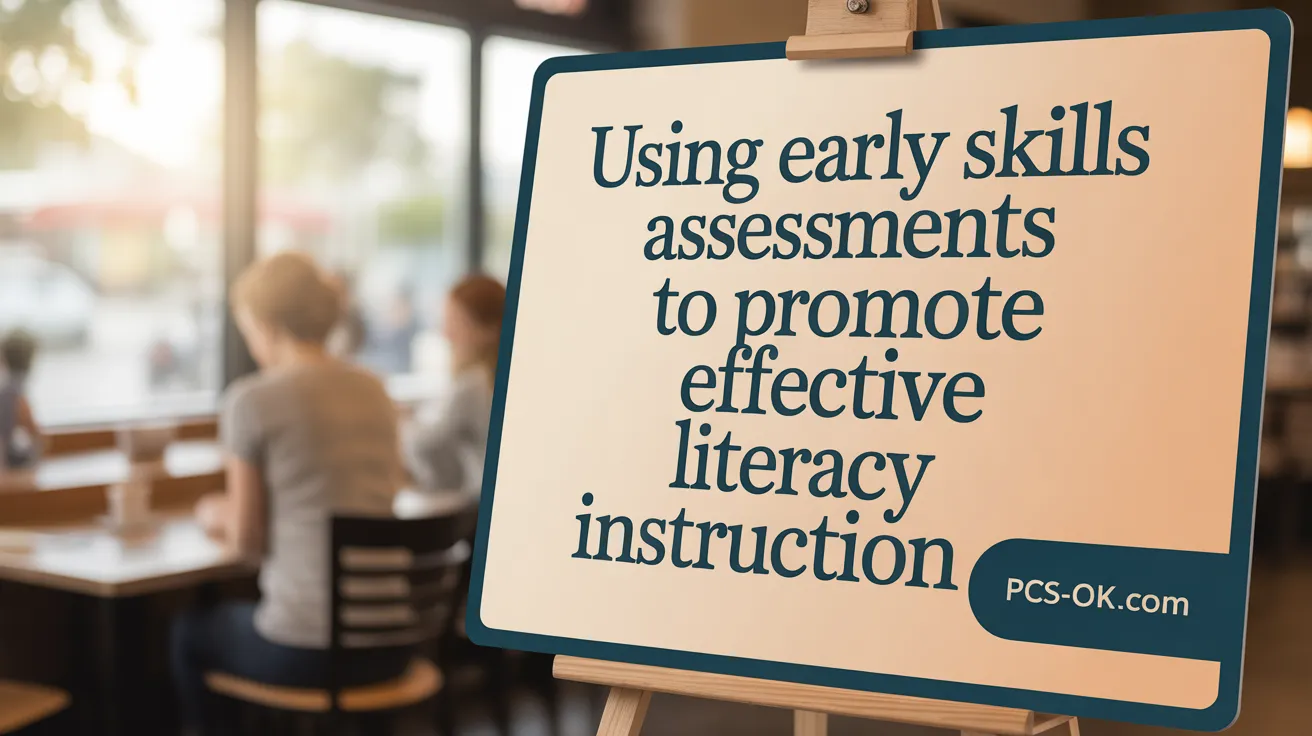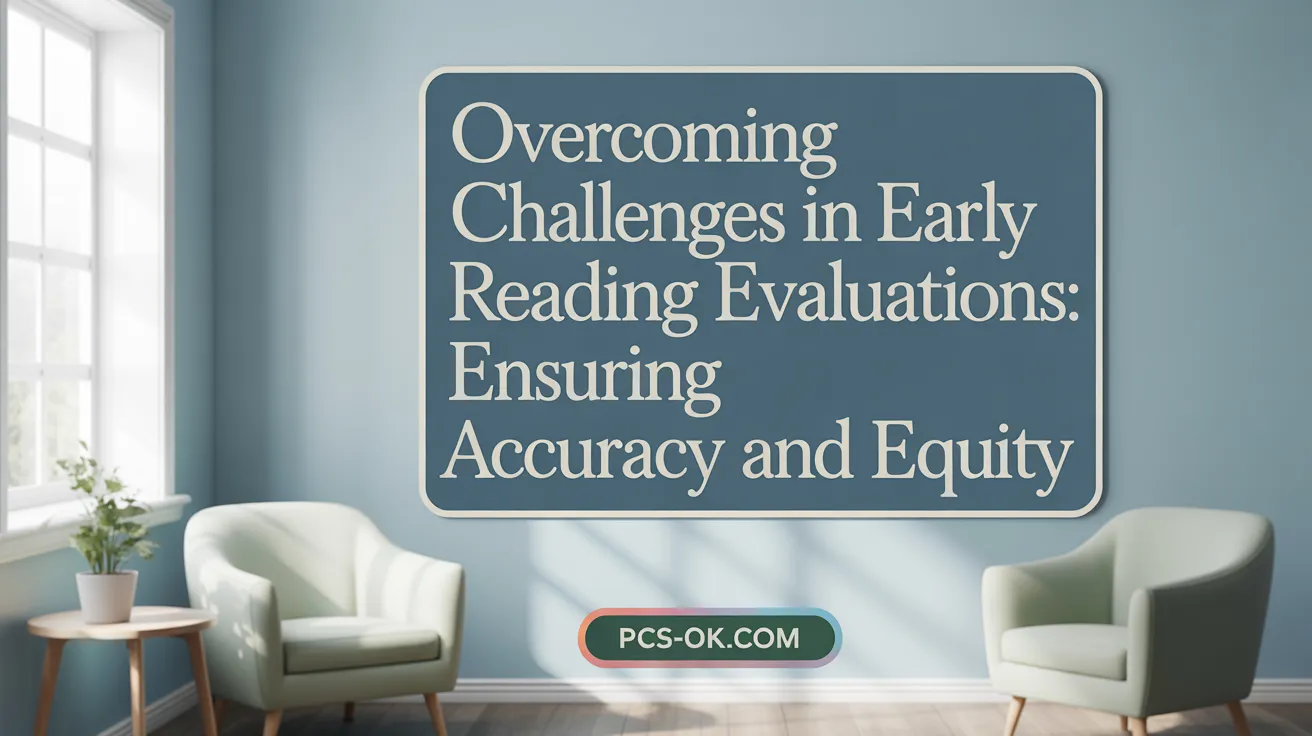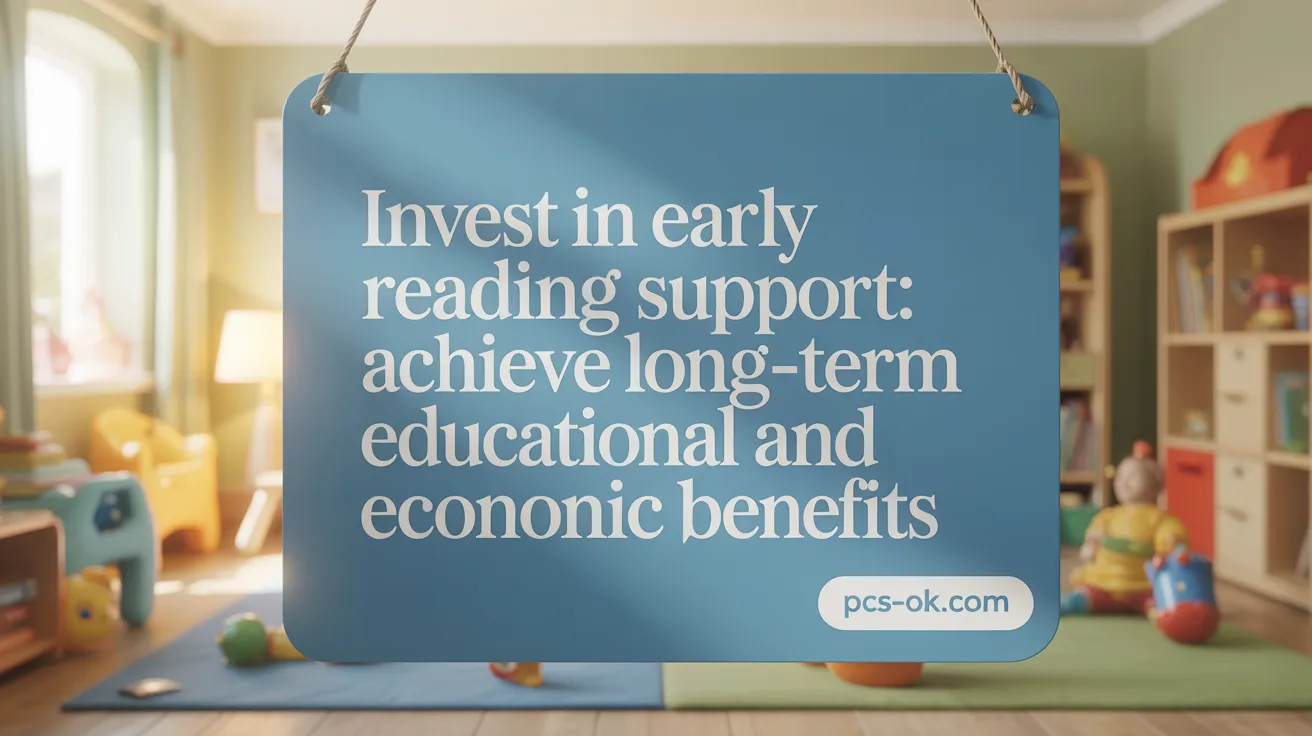How Early Reading Evaluations Help Prevent Struggles
Understanding the Critical Role of Early Reading Assessments
Early reading evaluations serve as the cornerstone for identifying children at risk of reading difficulties well before these challenges become entrenched. By assessing foundational literacy skills early—often starting in kindergarten and sometimes preschool—educators can implement targeted, evidence-based interventions that significantly improve outcomes. This article explores the methods, benefits, and research supporting early reading evaluations and their pivotal role in preventing reading struggles and fostering lifelong literacy.
The Essential Role of Early Reading Evaluations in Preventing Literacy Challenges

How can early reading evaluations help prevent reading difficulties and support literacy development?
Early reading assessments are fundamental tools that help educators identify students who may be at risk for reading challenges as early as kindergarten. By administering brief, reliable, and easy-to-understand screening tests—often taking about 5 to 10 minutes per child—schools can monitor early literacy skills frequently throughout the year. These assessments measure critical predictors of future reading success, such as phonemic awareness, letter knowledge, and sight vocabulary.
Identifying children who show signs of delayed literacy development enables educators to provide targeted, evidence-based interventions promptly. For instance, children identified through assessments of phonological skills or decoding abilities can receive explicit instruction in these areas. Such early support can involve intensive, systematic instruction lasting more than 63 hours when necessary, often delivered through one-on-one or small group formats.
Research shows that early intervention significantly improves reading outcomes. It reduces the chances of long-term reading failure, vocabulary deficits, and comprehension problems later in school. Moreover, assessments of oral reading fluency and comprehension by the end of first grade can reliably predict future reading achievement, allowing for adjustments in instruction and additional support when needed.
Using these assessments as part of a comprehensive response-to-intervention system benefits student learning and educational equity. When implemented correctly, early evaluations help prevent literacy struggles before they become entrenched, ultimately supporting children’s academic success and lifelong literacy skills.
Early Screening and Assessments: Frontline Tools to Prevent Future Reading Difficulties

What role do early screening and assessments play in preventing future reading difficulties?
Early screening and assessments are crucial in the early grades, particularly in kindergarten through third grade, to identify children at risk for reading difficulties. These tools enable educators and parents to detect potential issues before they become severe, allowing for timely and targeted interventions. This early identification helps prevent the negative spiral of ongoing academic struggles and vocabulary gaps, which often lead to poor comprehension later on.
Screenings are typically brief, taking about 5 to 10 minutes per child, making them feasible to administer multiple times a year. They focus on key skills such as phonemic awareness, alphabetic understanding, letter knowledge, and oral reading fluency. Identifying students who may need extra support early on increases the likelihood of successful intervention, thereby reducing the need for intensive remedial programs later.
Regular assessments serve a dual purpose: they track progress and inform instruction. By monitoring foundational reading skills through repeated screenings, educators can adjust their teaching strategies to meet students’ evolving needs. This proactive approach not only promotes literate development but also reduces societal costs associated with long-term reading failure.
Overall, early screening and assessments form the frontline defense in educational strategies aimed at fostering strong literacy skills. They empower educators to provide timely, relevant support, which fosters long-term reading achievement and helps children develop the critical skills necessary for academic success.
Common Methods and Tools in Early Reading Evaluations
What methods and tools are commonly used in early reading evaluations for identifying reading issues?
To effectively identify children at risk for reading failure, educators utilize a mix of assessment methods that include screening, diagnostic, and progress monitoring tools.
Screening assessments are brief, usually taking about 5-10 minutes per child, and are used multiple times a year to quickly identify students who may be struggling. Examples include nationally recognized tools like DIBELS, PALS, and TPRI. These screenings cover critical early literacy skills such as phonemic awareness, letter knowledge, and decoding. The goal is to flag students who need further assessment or intervention.
Diagnostic assessments follow screening when a child’s risk is identified. These are more detailed, focusing on specific skill gaps. Common examples are the CTOPP (Comprehensive Test of Phonological Processing) and the ERDA (Early Reading Diagnostic Assessment). They assess areas like phonological awareness, word reading, vocabulary, and comprehension, providing clearer insights into why a child may be struggling.
Progress monitoring tools are used regularly—in some cases monthly—to track growth over time. These include fluency tests, vocabulary measures, and other curriculum-based assessments that help educators see whether interventions are working and adjust instruction if necessary.
In addition to formal assessments, educators also gather valuable qualitative data, such as classroom observations, work sample analysis, student interviews, and curriculum-based assessments. These provide context beyond scores, capturing student engagement, strategies, and learning behaviors.
Together, these methods form a comprehensive evaluation system that not only pinpoints reading difficulties but also guides targeted, evidence-based interventions. The aim is early detection and support to ensure all children develop strong foundational reading skills.
Guiding Effective Literacy Instruction Through Early Skills Assessment

How does early skills assessment connect to effective literacy instruction?
Early skills assessment plays a crucial role in shaping effective literacy instruction. These assessments, which include brief screening tools like the Dynamic Indicators of Basic Early Literacy Skills (DIBELS) and informal diagnostic evaluations, provide educators with vital information about a child’s current reading abilities, including phonemic awareness, letter knowledge, and decoding skills.
By identifying specific strengths and weaknesses, teachers can tailor their teaching strategies to meet the needs of individual students. For example, a child demonstrating difficulty with letter-sound recognition may benefit from targeted phonics instruction, while another struggling with vocabulary might require additional language-rich activities.
Accurate and developmentally appropriate assessments also help in tracking progress over time. As students develop, repeated screenings allow teachers to see if interventions are working or need adjustment. This ongoing monitoring ensures that instruction remains responsive, timely, and relevant.
Furthermore, assessment data guides curriculum planning and professional development efforts. When schools understand prevalent skill gaps, they can modify instructional approaches and allocate resources effectively. This alignment enhances student engagement and accelerates the acquisition of foundational literacy skills.
Ultimately, early assessment acts as a foundation for personalized instruction—promptly addressing learning needs, preventing future reading difficulties, and fostering a positive attitudes toward reading. The synergy between assessment and instruction is essential for promoting long-term reading success.
Predicting and Addressing Reading Challenges Through Early Assessments
How do early reading assessments impact the prediction and addressing of reading challenges?
Early reading assessments are vital tools that help identify children at risk of reading difficulties during the foundational stages of learning, often as early as kindergarten. These assessments evaluate skills such as phonemic awareness, alphabetic understanding, letter knowledge, and sight vocabulary, which are strong predictors of future reading success. For example, research shows that letter identification in kindergarten correlates with reading abilities through grades one to three, with a mean correlation of .52.
By pinpointing specific skill gaps early on, educators can implement targeted interventions tailored to each child’s needs. These interventions might include focused instruction in phonological processing, decoding skills, or vocabulary development. Early prediction enables timely support, preventing minor issues from developing into long-term reading struggles.
While brief screening assessments—taking about 5 to 10 minutes per child—are effective for initial identification, their predictive accuracy improves when combined with ongoing progress monitoring and diagnostic evaluations. Repeated assessments throughout the year help track individual growth and response to instruction, providing a clearer picture of which students need additional help.
In practice, strict cutoff criteria such as the bottom 10% can correctly identify about 83.2% of at-risk children, though they might miss some. A more lenient cutoff (bottom 25%) reduces missed cases but increases the chance of false alarms. Therefore, over-identification through frequent screening and multiple assessment forms is encouraged to ensure children who need support are not overlooked.
Furthermore, assessments of oral reading fluency and comprehension conducted at the end of first grade are highly reliable indicators of future reading success. They help refine predictions and guide instructional decisions.
In summary, early assessments serve as an essential first step in the literacy development process. When combined with continuous monitoring and diagnostic assessments, they support early identification and intervention strategies that significantly improve long-term reading outcomes for most students, laying a strong foundation for future academic achievement.
Benefits of Early Evaluation for Tailoring Intervention Strategies
Why are early evaluations important for guiding intervention strategies in literacy?
Early evaluations play a vital role in shaping effective literacy instruction by helping educators identify children who face difficulties with foundational skills such as phonemic awareness, decoding, and comprehension. These assessments allow teachers to quickly pinpoint students who need additional support, often through brief screening tools that take only 5-10 minutes per child.
By collecting initial baseline data, early assessments provide a clear picture of each child’s current skill levels. This information is essential for designing personalized instruction that targets specific weaknesses. For example, a child struggling with letter recognition can be provided with targeted activities to improve this skill before progressing to more advanced reading tasks.
Ongoing monitoring is equally important. Regular reassessments help track learning progress and determine whether interventions are effective. Adjustments can then be made to instruction as needed, ensuring that support remains aligned with each child’s evolving needs.
Research highlights that early identification and intervention significantly improve reading outcomes. When educators use systematic screening and progress monitoring, they can prevent small difficulties from developing into severe reading problems.
Overall, early evaluations are a proactive approach. They facilitate data-driven decisions that lead to targeted, effective instruction, ultimately supporting children’s early literacy success and reducing future reading challenges.
| Aspect | Purpose | Benefit |
|---|---|---|
| Baseline Data | Establish initial reading skill levels | Guides personalized instruction |
| Screening Tools | Quickly identify at-risk children | Enables timely intervention |
| Progressive Monitoring | Track growth and response to instruction | Adjusts teaching strategies to meet student needs |
| Intervention Planning | Develop targeted support strategies | Improves long-term reading outcomes |
| Reassessment Frequency | Ensure instructional responsiveness | Maintains relevance and effectiveness of support |
By integrating these assessment practices, schools promote early literacy development, helping every child build a strong foundation for reading success.
Research-Based Evidence Supporting Early Reading Evaluation and Intervention
What research-based evidence supports early evaluation as a means to prevent reading struggles?
Extensive research underscores the importance of early screening and assessment in identifying children at risk for reading difficulties. Early evaluation tools, often brief and easy to administer, are effective in detecting foundational reading skills such as phonemic awareness, letter knowledge, and vocabulary, which are strong predictors of future reading success.
Studies show that interventions initiated during kindergarten through third grade are particularly effective. Meta-analyses reveal that early targeted instruction can yield effect sizes around 0.28 to 0.39, translating to meaningful gains in reading skills. For example, providing more than 63 hours of early intervention demonstrates significant improvements, with some evidence suggesting that intensive, one-on-one literacy instruction can be especially beneficial.
Longitudinal research, including large datasets like the ECLS-K and NAEP, indicates that children who receive early support are less likely to develop long-term reading problems. Early interventions focusing on decoding, phonological processing, and vocabulary effectively prevent the persistence of reading difficulties.
Moreover, early identification allows educators to deliver systematic, explicit, and evidence-based instruction before reading issues become deeply rooted. This proactive approach results in higher literacy levels, reduced need for special education placements, and better academic outcomes overall.
In sum, a wealth of empirical data confirms that early assessment and intervention are crucial for successful literacy development. They serve as a preventative measure, significantly reducing the chance of future reading failure and fostering a strong foundation for lifelong reading success.
How Early Identification Through Evaluations Enhances Reading Outcomes
In what ways does early identification through evaluations contribute to improved reading outcomes?
Early assessments are vital tools for pinpointing young children at risk of reading failure, often as early as kindergarten. These brief screening tests, taking about 5-10 minutes per child, evaluate crucial literacy skills such as phonemic awareness, letter recognition, and sight vocabulary. Because these measures are quick, trustworthy, and easy to administer, teachers can conduct screenings multiple times a year to monitor student progress effectively.
Research shows that the predictive accuracy of these early measures—particularly letter identification, phonological awareness, and fluency assessments—helps identify children who are most likely to struggle with reading in later grades. For example, letter recognition in kindergarten correlates strongly (mean correlation of .52) with reading abilities from grades one through three.
By accurately forecasting future success, educators can implement targeted interventions promptly, sometimes before children even enter grade one. These early interventions—focused on decoding skills, vocabulary, and fluency—are more effective than waiting until students show signs of failure. Intervening early supports children in developing foundational skills, which are critical for reading comprehension, vocabulary growth, and overall academic achievement.
Moreover, early identification reduces the risk of the ‘wait-to-fail’ cycle, where children fall behind without support, making later remediation more difficult and costly. Initiating interventions at the first sign of trouble ensures that children receive help before struggling readers fall significantly behind their peers.
Ongoing progress monitoring through regular assessments enables educators to adjust strategies tailored to each child’s evolving needs. This continual oversight fosters faster improvement, higher reading accuracy, and sustained long-term literacy development.
In summary, early detection and systematic assessment enable timely, personalized support that significantly enhances reading outcomes, preparing children for future academic success and reducing the likelihood of persistent reading difficulties.
Challenges and Considerations in Early Reading Evaluations

Over-identification and false positives
Early screening assessments are vital tools for identifying students who may struggle with reading, but they come with limitations. One common challenge is over-identification, where many children are labeled as at risk when they might not truly need additional support. For instance, using very strict cutoff criteria (bottom 10%) can correctly flag about 83% of at-risk children, but this approach may miss some students who need help. On the other hand, a more lenient cutoff (bottom 25%) can capture more at-risk students but also increases false alarms, meaning some children are incorrectly identified.
To address this, educators often use frequent re-screening, combined with various assessment tools, to reduce errors. Continuous monitoring helps ensure that children falling behind are identified early and receive appropriate interventions, without unnecessarily labeling children who are developing normally.
Assessment validity and alignment
Ensuring assessments are valid, reliable, and aligned with reading development standards is crucial. Many screening tools focus on early reading skills such as phonemic awareness and letter knowledge, which have high predictive value for future success. However, inconsistencies in assessment tools or misinterpretation of results can lead to misclassification of students. For example, some assessments may not adequately measure comprehension skills like vocabulary and background knowledge, which are also important for reading growth.
States generally mandate that screening assessments be used annually, but it’s essential that educators understand the purpose of each tool—screening, diagnostic, or progress monitoring—and use the results appropriately. Proper alignment ensures that assessments support accurate identification and effective instruction.
Supporting diverse learners
Children with disabilities or those learning English as a second language face unique challenges in early reading assessments. Many testing tools are not fully adapted to meet their needs, risking misclassification or inadequate support. To support these learners, assessments must be culturally and linguistically appropriate, and follow-up diagnostics should be tailored to their specific backgrounds.
Providing targeted, evidence-based instruction tailored to each child’s needs from an early age helps prevent reading difficulties. Training teachers to interpret assessment data accurately and develop inclusive instructional strategies is essential for supporting all students in their reading development.
| Challenge | Impact | Approaches | Additional Notes |
|---|---|---|---|
| Over-identification | Mislabeling children as at risk | Frequent re-screening, multiple tools | Balances false positives and negatives |
| Mismatch in assessment tools | Misclassification, overlooked skills | Use aligned, validated assessments | Ensures accurate evaluation |
| Supporting diverse learners | Risk of misdiagnosis, insufficient support | Culturally responsive assessments | Tailored interventions needed |
Integrating Early Reading Evaluations Within Multi-Tiered Systems of Support (MTSS)
Role of screening in MTSS
Early screening assessments are essential in the MTSS framework for identifying students at risk for reading difficulties as early as kindergarten. These brief tools, taking about 5 to 10 minutes per child, are easy to administer and can be used multiple times a year to monitor progress. They help educators decide if a student needs additional diagnostic assessments or targeted instruction.
Effective screening covers foundational skills like phonemic awareness, letter recognition, and sight vocabulary, which strongly predict future reading success. States typically require these assessments at least once a year, aligning with evidence-based practices focused on decoding and language comprehension. When screening results classify some children as ‘at risk,’ schools can implement early interventions, often resulting in better long-term reading outcomes.
Progress monitoring
Once students are identified, ongoing progress monitoring offers valuable data on their response to instruction. Regular checks, such as timed word reading and fluency assessments, show whether students are learning critical skills like decoding and reading fluency. These insights enable educators to adjust instruction promptly and provide additional support where needed.
Progress monitoring also guides decisions about instruction intensity and curriculum adjustments. It supports differentiation of instruction, helps identify students who might need special education referrals, and ensures the effectiveness of interventions over time. Frequent assessments are vital in proving whether targeted strategies are reducing reading difficulties.
Targeted instruction and resource allocation
Data from screening and progress monitoring informs targeted instruction, ensuring resources are directed toward students who need them most. Early interventions, which typically involve 30-minute daily sessions of explicit, evidence-based instruction, have shown significant positive effects, especially for children with phonological processing weaknesses.
Schools can use these assessments to allocate instructional support efficiently and tailor interventions based on specific skill deficits such as phonemic awareness, letter knowledge, or vocabulary. For students with persistent difficulties, specialized and intensive interventions become necessary, including diagnostic evaluations to develop personalized learning plans.
Assessment system overview
| Assessment Type | Purpose | Characteristics | Typical Use |
|---|---|---|---|
| Screening Tests | Identify at-risk students early | Quick, inexpensive, easy to administer | Entry points for intervention |
| Progress Monitoring | Track growth and response to instruction | Frequent, ongoing, assesses progress again skills like fluency and decoding | Adjust instruction and improve outcomes |
| Diagnostic Assessment | Confirm specific skills deficits, inform intervention plans | More time-consuming, detailed, costly | Used after initial screening to tailor support |
By integrating these assessment types within MTSS, schools can better support students’ reading development, preventing long-term struggles and promoting academic success.
Investing in Early Reading Supports: Economic and Educational Implications

What is the cost-effectiveness of early intervention?
Early literacy assessments and targeted interventions in kindergarten and early grades are highly cost-effective. Providing structured, explicit instruction for struggling readers typically involves around 30 minutes daily, which yields significant improvements in reading skills. These early efforts help prevent long-term reading difficulties that can lead to expensive remedial programs and special education services later on. Investing resources early can reduce the need for costly interventions and support services down the line.
What are the long-term societal benefits?
Children who receive early identification and support are more likely to develop strong reading skills, which are crucial for overall academic success. Long-term, these children tend to have higher educational attainment, better employment opportunities, and increased earning potential. Additionally, improved literacy levels contribute to a more educated workforce, fostering economic growth and reducing societal costs associated with literacy-related issues.
How does early intervention help in reducing special education referrals?
Effective early screening and intervention lessen the number of children who require special education services due to reading disabilities. By addressing reading challenges before they become severe, schools can lower the number of referrals for special education, reducing associated financial costs. Furthermore, children who learn to read early and well are less likely to experience school failure, dropout, or involvement with the justice system, all of which have broader societal and economic impacts.
| Aspect | Description | Economic Impact |
|---|---|---|
| Early Screening | Brief, developmentally appropriate, repeated assessments | Cost-effective prevention of more intensive interventions |
| Targeted Interventions | Evidence-based, explicit instruction for at-risk children | Reduces future educational and social costs |
| Societal Benefits | Better employment and societal participation | Increased productivity and reduced social costs |
Allocating resources toward high-quality early literacy assessments and interventions not only supports individual children but also offers significant long-term economic advantages for society.
The Vital Role of Early Reading Evaluations in Shaping Literacy Futures
Early reading evaluations are indispensable tools in the fight against literacy struggles. By identifying at-risk learners promptly and guiding evidence-based interventions, these assessments help prevent persistent reading difficulties and promote academic success. While challenges exist—including assessment alignment and ensuring equitable support for diverse learners—the extensive research and practical outcomes demonstrate clear benefits. Integrating these evaluations within comprehensive educational frameworks like MTSS ensures sustained monitoring and tailored instruction, maximizing the return on investment in early literacy. Ultimately, early reading evaluations not only improve individual life trajectories but also foster stronger, more literate communities.
References
- Early Screening Is at the Heart of Prevention
- The Importance of Early Literacy Assessments—and Why …
- Catch Them Before They Fall: Identification and …
- Early Reading: Screening, Diagnosis, And Prevention
- The Importance of Early Literacy Screening
- Current Evidence on the Effects of Intensive Early Reading …
- Early Reading Skill Development and Characteristics of …
- Identifying and Teaching Students with Significant Reading …
